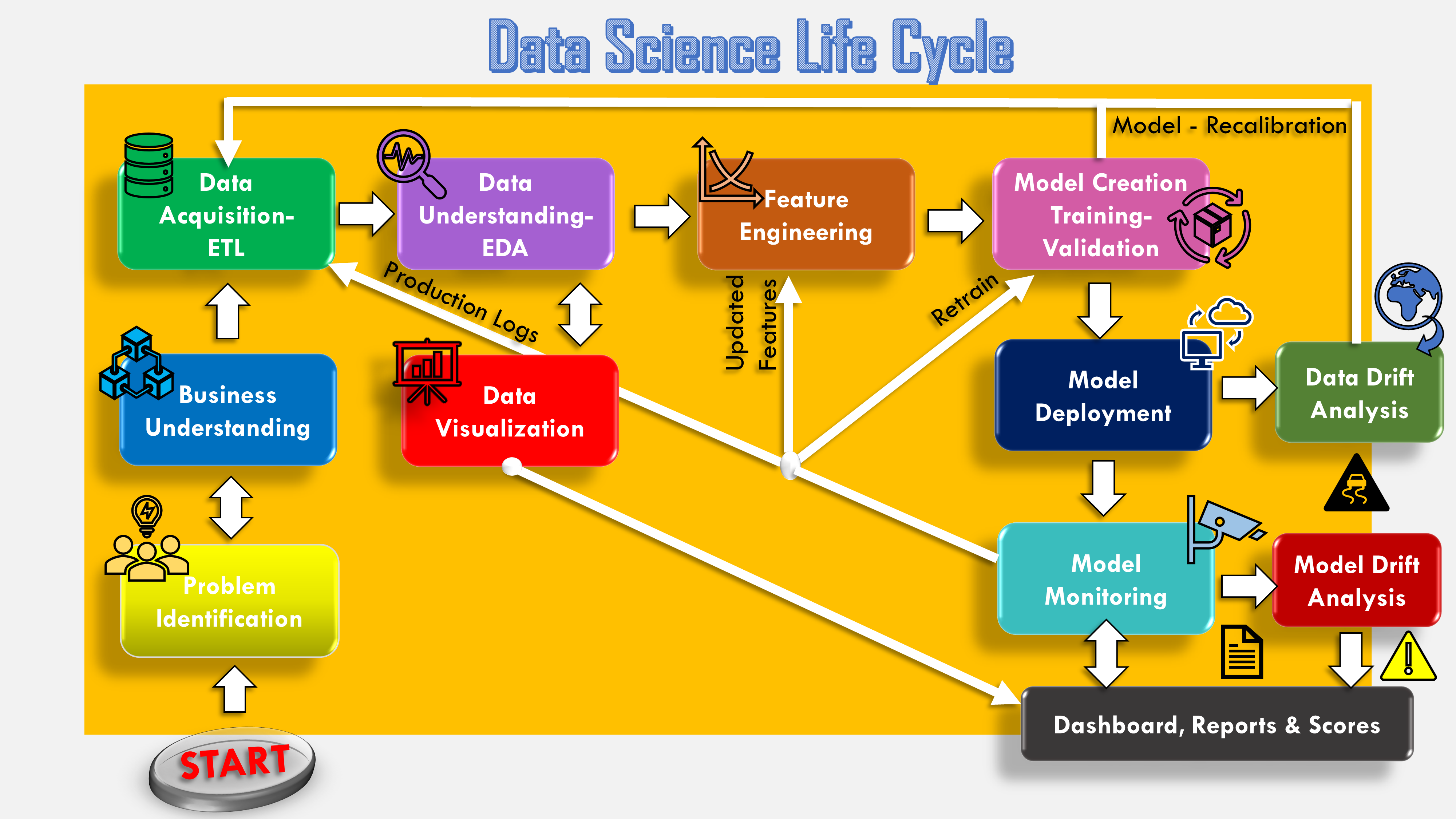In order to make a Data Science life cycle successful, it is important to understand each section well and distinguish all the different parts. Specifically is very important to understand the difference between the Development stage versus the Deployment stage, as they have different requirements that need to be satisfied as well the business Aspect.
Most Data Science projects have similar work-flow/ structure, that you can use to structure your projects. The lifecycle below outlines the major stages that a data science project typically goes through. It is never a linear process, though it is run iteratively multiple times to try to get to the best possible results, the one that can satisfy both the customer(s) and the Business.

The Horizontal line represents a typical machine learning lifecycle looks like starting from Data collection, to Feature engineering to Model creation: Model Development Stage. The left-hand vertical line represents the initial stage of any kind of project: Problem identification and Business understanding, while the right-hand vertical line represents the whole aspects of the Model Deployment stage. Now without further ado let’s go and find out each stage.
Problem Identification:
Like any problem, the first thing to discuss is all business scenarios is Problem Identification, This is where we:
- Clearly identify the root cause of a problem, by identifying the true, underlying problem.
- Develop a detailed problem statement that includes the problem’s effect on the targeted client /customer.
HOW DO YOU IDENTIFY THE PROBLEM?
We Identify the root cause of the problem by collecting information and then talking with stakeholders and industry experts. Followingly, _Merging existing research and information from your stakeholders _can offer some insight into the problem and possible high-level solution. Consider data sources that could help you more clearly define the problem. Starting by doing a literature review, and if necessary, surveys in the data science community.

Business Understanding:
This where the Business problem is defined, understanding the business problem is key in coming up with a good model because it makes you understand the Business objective.
For instance, if you are credit card example you want to make sure I underwrite customers who could pay, or another one could be detecting fraudulent customers, so the intention can be to reduce risk and the same time increase revenue.
Now that we have a business understanding, we can define the success criteria of the ML project, the success criteria can be based on what we are currently doing. You need to see if the project is viable in longer-term and does it give you a business advantage to really to take it forward.
Now one thing very obvious, but still extremely important to denote is that the low barriers to entry internet marketplace where anyone has great information available have made the whole market extremely competitive in a business point of view. Every one of us is facing competition, therefore only by continually measuring and tracking the right metrics and thinking about how to move the metrics to improve your performance we can increase our chances to come out on top.
This is where we need to have the right metrics:
· KPI (Key Performance Indicator)
KPIs stands for **Key Performance Indicator: **Measure your performance against key business objectives. Businesses use this to measure their performance against objectives and the overall health of their business. It’s crucial to agree upon the right set of KPIs for each business, and not to fall into the trap of chasing vanity metrics that look great but aren’t meaningful.
· SLA (Service Level Agreement)
A Service-Level Agreement (SLA) defines the level of service expected by a customer from a supplier, laying out the metrics by which that service is measured. For instance, If you are creating a very complex pipeline and you have an SLA of 100 milliseconds to meet and you have to process like 2000 transactions per second. You have to make sure you will meet your SLA and KPI need, otherwise, the model is not gonna be to any benefit to you.
Misalignment in the metrics can have a negative impact on deal pricing, quality of service delivery, customer experience overall Business objective and reputation. The best possible way will be to monitor these KPI(s) and SLA(s) using, for instance, KPI Dashboard to monitor key results.
Again a very important distinction to remember is the difference between the algorithmic objective with the business objective. Most of the times they can be confused, THE BUSINESS OBJECTIVE MUST BE SIMPLE AND CLEAR IN BUSINESS TERMS.
#machine-learning #software-development #ai #data-science
